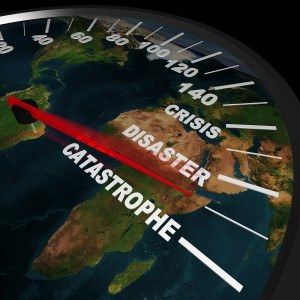 Severe cold weather and a winter storm that affected large parts of Europe during the second half of February and early March caused business interruption and other damages surpassing hundreds of millions of dollars, according to a new report from Aon Benfield’s Impact Forecasting.
Severe cold weather and a winter storm that affected large parts of Europe during the second half of February and early March caused business interruption and other damages surpassing hundreds of millions of dollars, according to a new report from Aon Benfield’s Impact Forecasting.
Cold or bad weather also created trouble through parts of the United States and much of the world, the report noted. An earthquake left behind major damage in Papua New Guinea, among other natural disasters during that period.
“Nearly every major continent recorded noteworthy natural disaster impacts during the month of February,” Steve Bowen, Impact Forecasting director and meteorologist, said in prepared remarks. “While financial costs from large-scale weather events in Europe and the United States are likely to be easily absorbed by local governments and the insurance industry, the impact to less affluent regions is expected to pose a greater challenge for recovery.”
Underscoring the trouble caused by damage to less affluent regions, Bowen noted the turmoil caused by Cyclone Gita’s path through the South Pacific Islands and the massive earthquake that hit Papua New Guinea on Feb. 26, killing at least 75 people, injuring more than 500, and causing major damage or destruction to thousands of homes and other structures.
“The scale of damage…[highlights] the continued need to ensure that insurance programs or risk mitigation solutions are in place to help expedite the short- and long-term recovery process,” Bowen said.
Here is a rundown of the major natural disasters and weather events that hit during the last two weeks of February and early March:
- An outbreak of cold arctic air plus winter storm Emma hit a large part of Europe, leaving temperatures to drop to their lowest levels in decades. The temperatures, heavy snow and freezing rain led to the cancellation or delay of thousands of flights. Many businesses had to close because of the inclement weather, and more than 88 people died due to hypothermia and other weather-related events. A high volume of insurance claims has been reported, and the financial cost should be at least “into the hundreds of millions” of dollars.
- Papua New Guinea was struck by a magnitude 7.5 earthquake on Feb. 26, killing at least 75 people and injuring more than 500. A state of emergency was declared for the hardest-hit areas, and $140 million has been allocated for initial recovery efforts. The final cost will likely be much higher.
- Two winter storms created widespread travel disruption in the U.S.
- Taiwan suffered a magnitude 6.4 earthquake on Feb. 6, with at least 17 fatalities and 278 injuries. There was widespread damage in the city of Hualien near the epicenter.
- Torrential rainfall and severe thunderstorms killed at least 15 people in central and eastern sections of the United States, as well as widespread damage. Economic damage should surpass $200 million.
- Severe thunderstorms hit Argentina, seasonal rainfall produced severe flooding in Indonesia, and several big flood events hit South America in February. South America’s floods alone caused economic damage surpassing $200 million, affecting property, infrastructure and agriculture.
- Malaysia, Canada, Malawi and the Middle East dealt with major floods.
- Cyclone Gita caused more than $50 million in infrastructure and public structure damage to several island nations in the South Pacific Ocean.
Source: Impact Forecasting





















 Breaking: Andersen to Replace Zaffino as CEO of AIG on June 1
Breaking: Andersen to Replace Zaffino as CEO of AIG on June 1  Surge of Supercharged Hurricanes Prompt Call for Cat 6 Classification
Surge of Supercharged Hurricanes Prompt Call for Cat 6 Classification  Is the AI Boom a Bubble Waiting to Pop? Here’s What History Says
Is the AI Boom a Bubble Waiting to Pop? Here’s What History Says 








